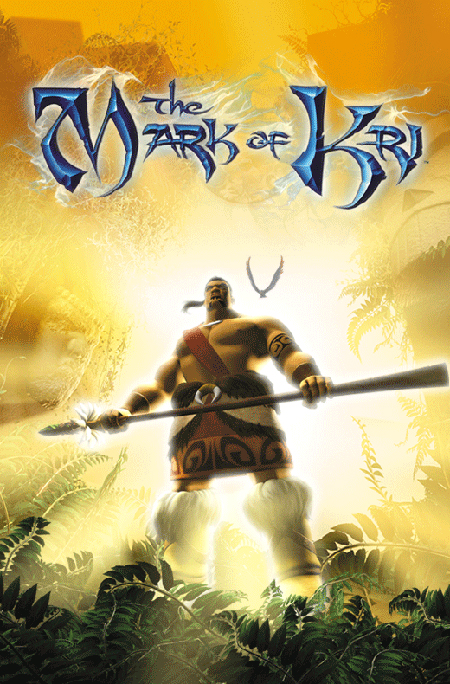

It seems odd that a top-notch first party title like The Mark of Kri first appeared on the
The Rise of Kasai, its sequel, is all that remains of this franchise and it is an underwhelming follow up to such a remarkable entry. The Mark of Kri itself was developed by Sony Studios in conjunction with some of the most influential 2D animators of the early 2000s. The game’s composer Jack Wall, known for the Myst series and Black Ops 4, produced a soundtrack that paid homage to the great fantasy works it sought to emulate from the silver screen. The environments and setting resembled a Maori mythos that is highly unusual when considering the European lore that dominates most popular works of fantasy. But even with all this high production, The Mark of Kri only managed a subpar sequel and a pair of appearances on Sony’s online store. This is both alarming and disheartening when all one has to do is think about how unique this title was back in 2002.Â
PlotÂ
Taking place in the fictional village of Taporaku, the game tells the story of Rau Utu and his quest to take revenge upon the evil mage known simply as the “The Dark One”. Along the way, Rau is aided by his companion a raven named Kuzo, who is both his mentor and battle companion throughout the journey. As the plot unfolds, Rau realizes his destiny is tied to that of saving his village from a cult who seeks to resurrect The Dark One. Simple in theory, but the memorable aspects of this game derive not from its plot but from its actual gameplay. The Mark of Kri utilizes the
The Gameplay
Sony Computer Entertainment even implemented a novel use of the PS2’s dual shock controller but using the left thumbstick as a means of movement for the main character and the right for targetting enemies. This means that during tactical cover sequences Rau could target a multitude of enemies and strike in a single quiet motion rather than having to engage constantly in asinine melee combat. The dual shock may not have been all that new in 2002, but never had it been more conjoined with the actual gameplay mechanics that it did with this title. Just the flick of the right analog stick meant the protagonist could take down enemies in realistic ways that mirrored the Metal Gear Solid franchise. Rau could choke, stab, pummel, and throw his enemies off a cliff depending upon how close he got to one.
Even visually the game is striking, having divested hours into it, a player today could easily see how it holds up till today. The game’s world feels like a whimsical stroll through a Polynesian fantasy realm that merges the tropes of Tolkien with the lush sprites of The Legend of Zelda. From the tall trees of the forest of Heiadoko to the narrow tunnels of the temple Meifiti, the game never repeats the same visual motif. Each location is as distinct as the enemies that litter each stage. The attention to detail is remarkable, even with the limited amount of exploration that exists in the world design. If any criticism is to be aimed at the game it is definitely the inability to explore the story world. The Mark of Kri even utilizes a first-rate narrator with a voice-over artist that gives any film production company a run for its money.
From the opening sequence in Rau’s training to the final confrontation with The Dark One, the narrator brilliantly elevates the story from a fun action adventure piece to greater heights of fantasy fiction. As a narrator, the voice actor is never stilted nor mundane in his pronunciation. The narration is enhanced simply through its actor’s performance and the plot is elevated through this means of voice over diction. But even with all this, The Mark of Kri only received a subpar sequel in the guise of The Rise of the
Legacy and Absence
The Mark of Kri was a modest hit, selling 460K units upon release, but continues to be ranked as one of the most unique and overlooked first-party titles of the
If any of Sony’s intellectual properties deserve to be reawakened for a new generation it is definitely this one. Rau and Kuzo are the classic heroic duo that plays off each other brilliantly along their quest. Kuzo’s enhanced sight coupled by his ferocity match that of his barbarian warrior travel companion. The exposition of the plot is framed in a storybook format and the violence is presented in such equal detail. The decade since its release has done little to take away from the game’s quality. The Mark of Kri strikes right with everything that makes for great storytelling. From a solid plot to its visual splendor, the game rarely strays away from being a wondrous experience. Kuzo and Rau are believable not because the game strives for photorealism but because they are fantasy characters that are inhabiting a believable fantasy setting. The Mark of Kri does not adhere to the dark fantasy realms of The Elder Scrolls nor does it care to.
If anything the game is a masterclass of how to merge the worlds of gaming and animation in a single meaning that evokes a mature sentiment. Its absence is felt strongly in the current console generation. A remastering would require just a simple fresh coat of paint rather than an entire makeover to be presentable to a modern audience. Nonetheless, The Mark of Kri is one of the most imaginative titles of the


Leave a Reply